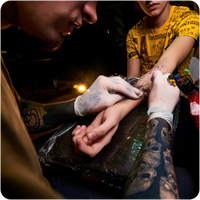Het arrangement An art dealer v456 is gemaakt met Wikiwijs van Kennisnet. Wikiwijs is hét onderwijsplatform waar je leermiddelen zoekt, maakt en deelt.
- Auteur
- Laatst gewijzigd
- 11-05-2025 22:51:16
- Licentie
-
Dit lesmateriaal is gepubliceerd onder de Creative Commons Naamsvermelding-GelijkDelen 4.0 Internationale licentie. Dit houdt in dat je onder de voorwaarde van naamsvermelding en publicatie onder dezelfde licentie vrij bent om:
- het werk te delen - te kopiëren, te verspreiden en door te geven via elk medium of bestandsformaat
- het werk te bewerken - te remixen, te veranderen en afgeleide werken te maken
- voor alle doeleinden, inclusief commerciële doeleinden.
Meer informatie over de CC Naamsvermelding-GelijkDelen 4.0 Internationale licentie.
Aanvullende informatie over dit lesmateriaal
Van dit lesmateriaal is de volgende aanvullende informatie beschikbaar:
- Toelichting
- Deze les valt onder de arrangeerbare leerlijn van de Stercollectie voor Engels voor vwo, leerjaar 4, 5 en 6. Dit is thema 'Culture'. Het onderwerp van deze les is: An art dealer. Deze les gaat over tatoeages. De vraag hierbij is, of tatoeages een vorm van 'cultural appropriation' is of niet. De grammaticaopdracht gaat over future perfect continuous.
- Leerniveau
- VWO 6; VWO 4; VWO 5;
- Leerinhoud en doelen
- Engels;
- Eindgebruiker
- leerling/student
- Moeilijkheidsgraad
- gemiddeld
- Studiebelasting
- 3 uur 0 minuten
- Trefwoorden
- an art dealer, arrangeerbaar, cultural appropriation, engels, future perfect continuous, stercollectie, tatoeage, v456

 An art dealer
An art dealer


 Read these questions about tattoos.
Read these questions about tattoos.
 Let’s look at ... future perfect continuous.
Let’s look at ... future perfect continuous. Look at the following statements. What do you think? Answer the questions in your notebook and discuss with a classmate.
Look at the following statements. What do you think? Answer the questions in your notebook and discuss with a classmate. What have you learnt in this period?
What have you learnt in this period?